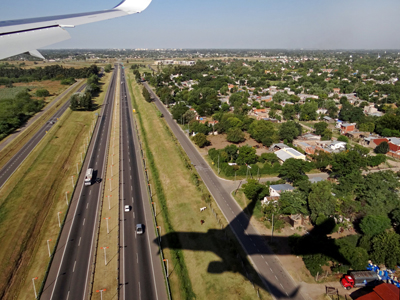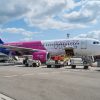
For the past 10 years the aviation industry in Latin America has been subject to impressive growth rates. According to IATA, over the next 10 years air traffic in the region is expected to increase by an average of 7% annually, which would put Latin America on about the same growth trajectory as China. Nevertheless, currently the region is actually performing weaker than it could.
According to the most recent figures, in Latin America aviation supports more than 4.6 million jobs and $107 billion in GDP. Airlines in the region are expected to contribute about $1 billion to the industry’s profitability which is more than double the $400 million that they earned last year. While this is a positive trend, there are still important areas where Latin America needs to chart a new course in order to reap fully the benefits of aviation’s connectivity.
“Too many Latin American countries are at risk of missing out on the economic development that aviation connectivity fosters, because instead of seeing aviation as a catalyst, they treat it as a luxury item. For example, a number of States in the region apply VAT and other taxes on jet fuel for international flights. As a result, fuel expense across the region is around 14% higher than the world average,” comments Skaiste Knyzaite, the CEO of AviationCV.com “Moreover, high fees and charges impact a country’s attractiveness as a destination and its competitiveness as an exporter.”
In addition, there’s the extraordinary situation in Venezuela, where billions of airline funds are being blocked by the government. Currently, the total amount owed to the carriers has grown to a staggering $4.1 billion. As a result, within the past year, 11 airlines operating in Venezuela have reduced operations between 15% and 78%–and a few have ceased flying altogether. “However, if these issues were eliminated, would Latin America be truly ready to meet the ever growing demand?” asks Skaiste Knyzaite, the CEO of AviationCV.com
blocked by the government. Currently, the total amount owed to the carriers has grown to a staggering $4.1 billion. As a result, within the past year, 11 airlines operating in Venezuela have reduced operations between 15% and 78%–and a few have ceased flying altogether. “However, if these issues were eliminated, would Latin America be truly ready to meet the ever growing demand?” asks Skaiste Knyzaite, the CEO of AviationCV.com
According to various forecasts, in the upcoming 20 years Latin American airlines will require up to 2 900 new aircraft. At the same time, over the same period, the region is going to need 45 000 pilots. Naturally, if the current obstacles are removed, the demand is going to increase significantly. Thus, according to the executive, developing the adequate capabilities of piloting the growing fleet should in fact become the top priority.
“Of course, the challenge of meeting the global demand for airline professionals cannot be solved by one company or in one region of the world. However, according to the figures provided by ALPA, in 2012 there have been 137 658 active pilots under the age of 65 with ATP certificates and additional 105 000 pilots who could qualify for commercial certificates in the U.S. alone, not to mention the ones in Europe. With such new perspective aircraft types as SSJ100 rising in popularity in the region, attracting qualified professionals to support the growth is more than possible. Given, of course, one knows where to look,” concludes the CEO of AviationCV.com.





